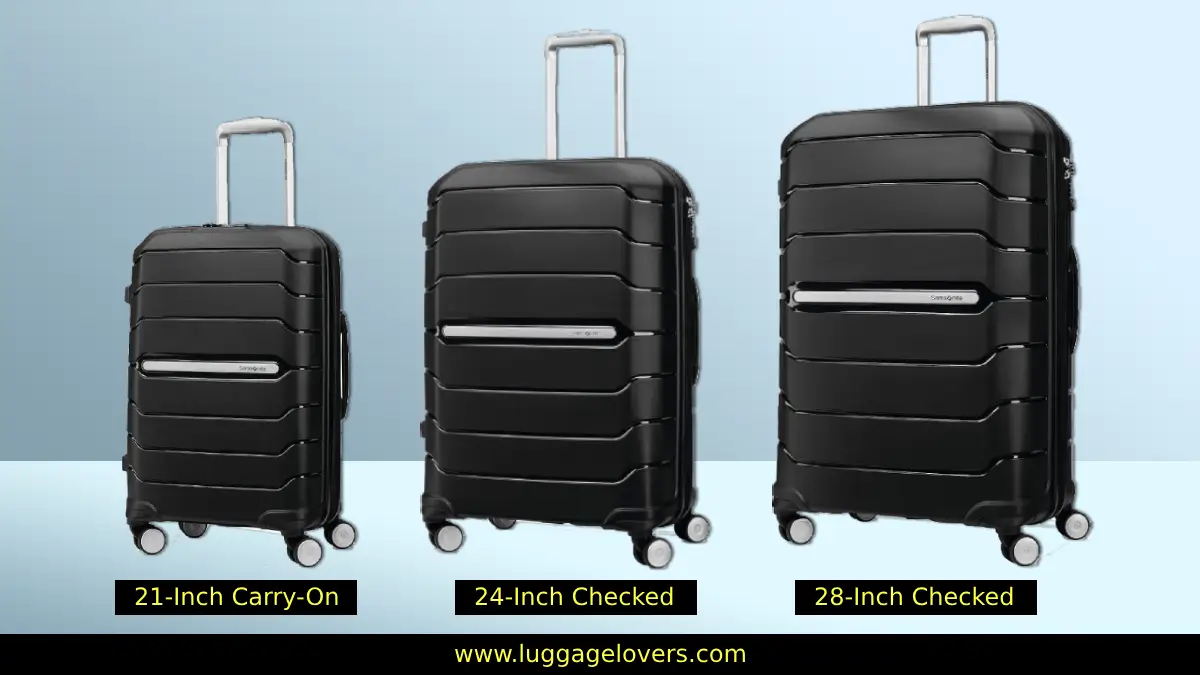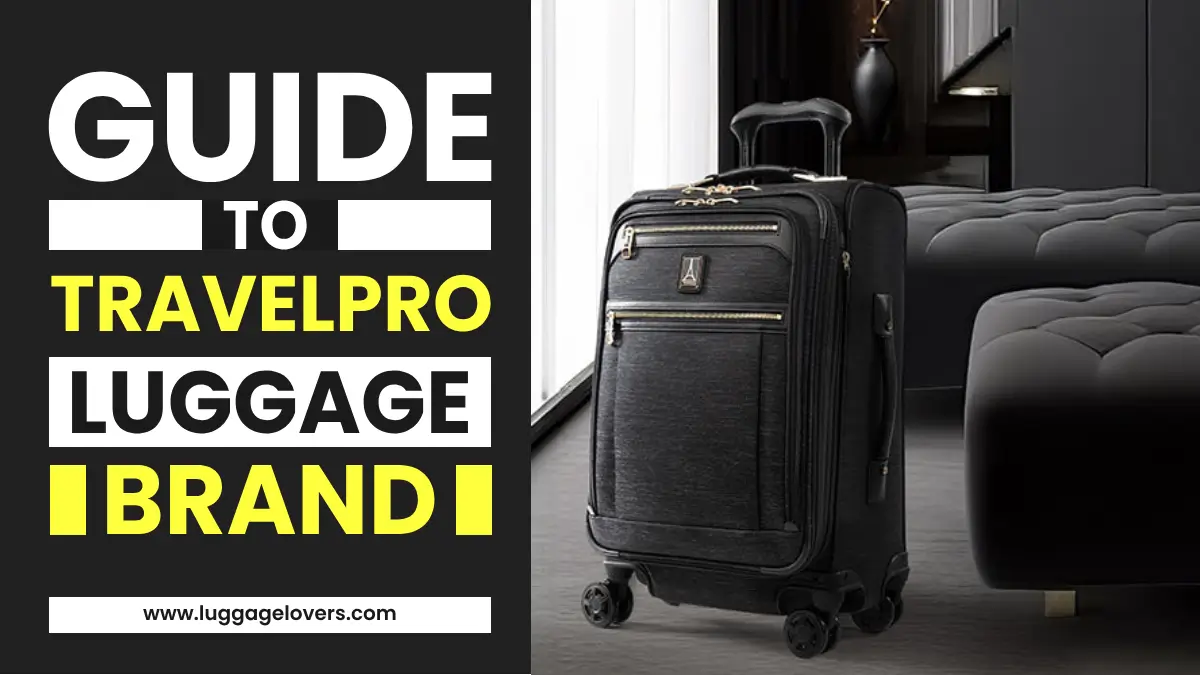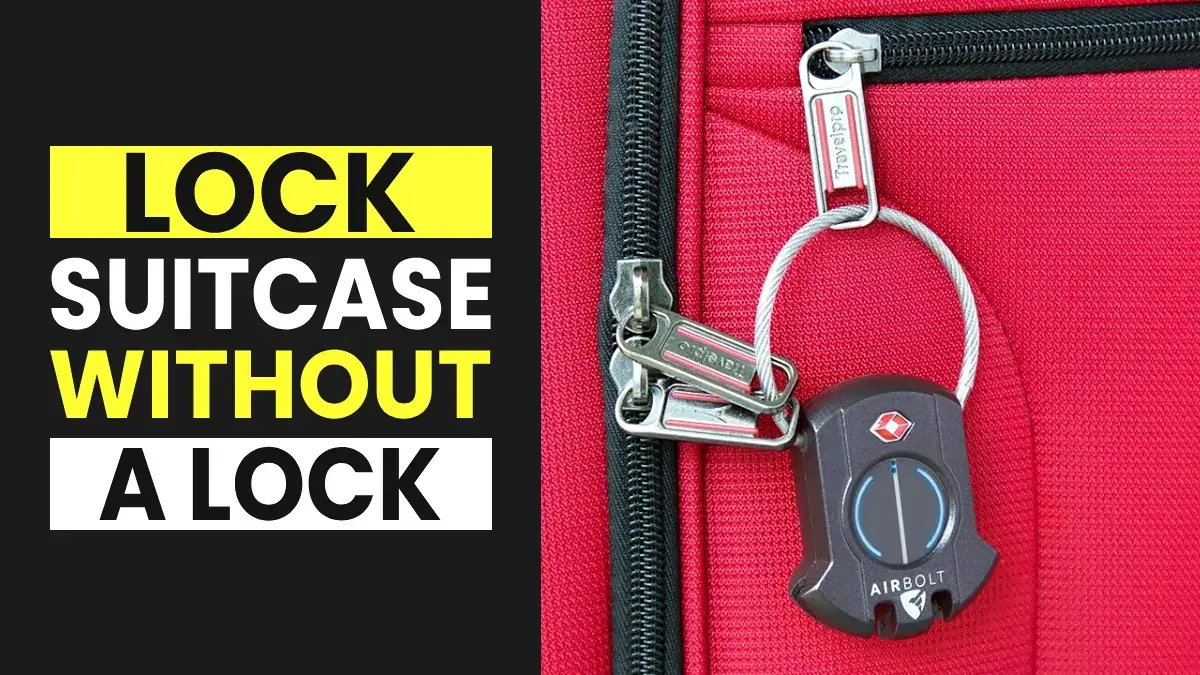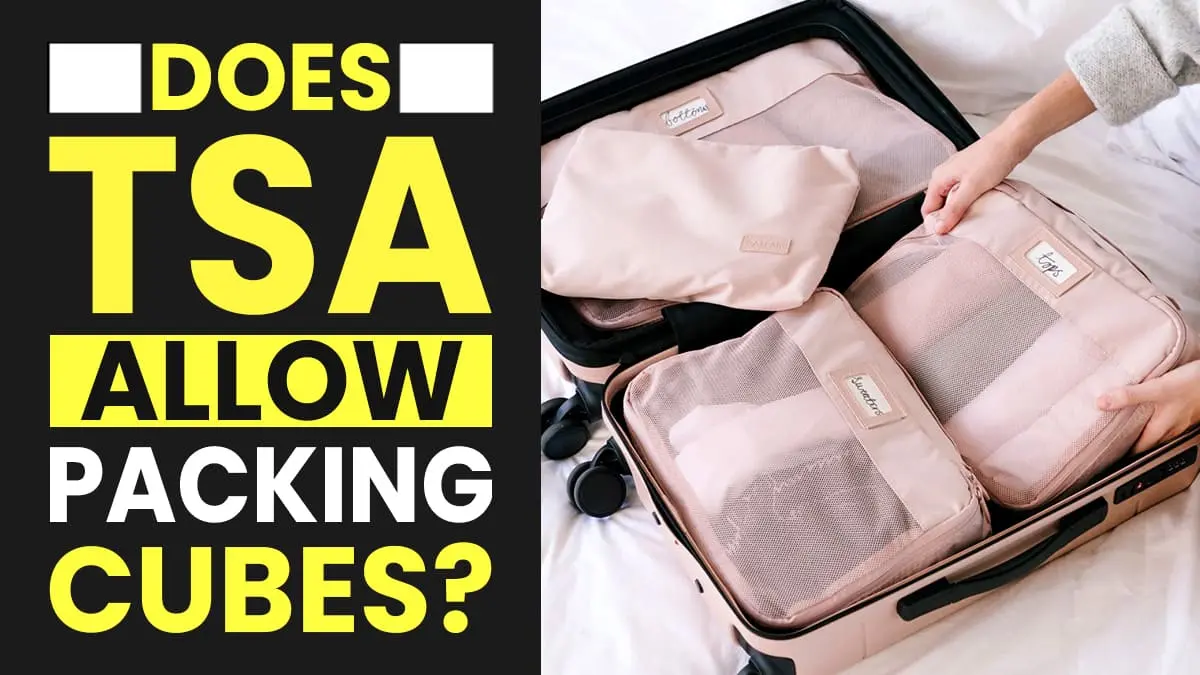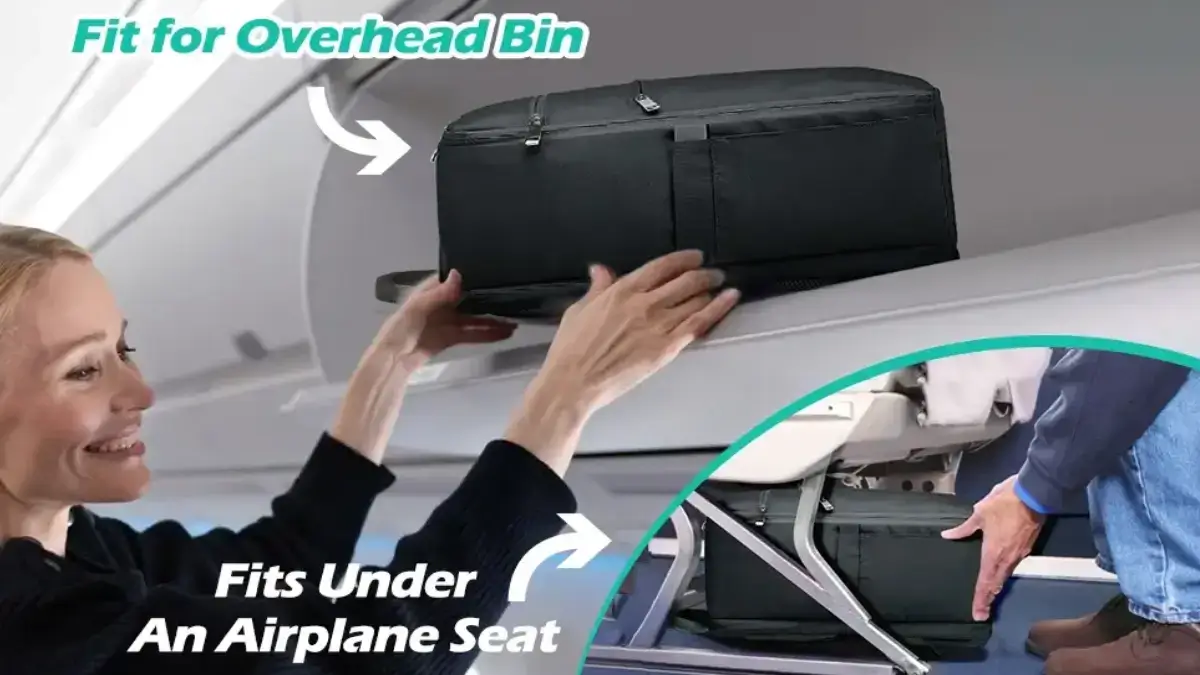Carry-on vs Checked Luggage | Detailed Guide with Benefits and Drawbacks
When it comes to traveling, the first thing that comes to our minds is what type of luggage we should choose, whether it’s carry-on or checked luggage. Choosing between both types of luggage depends on various factors, including the nature of travel, how long we’re planning to travel, and much more.
The key differences between carry-on and checked luggage lie in accessing luggage during a flight and size limitations. A carry-on bag is luggage that stays with you on the plane and can fit in the overhead compartment. On the other hand, a checked suitcase is luggage that is stored in a plane’s cargo and is inaccessible during a flight.
In this blog post on carry-on vs checked luggage, we’ll take a detailed look at the comparison of both carry-on and checked luggage, with the advantages and disadvantages, and guide you on what you should choose for your traveler. So stay with us till the end to know everything in detail.
Table of Contents
What is carry-on luggage?
So let’s start with the very basics: what exactly is carry-on luggage? Simply put, it’s a bag or piece of luggage that you can bring with you on planes, or, in other words, it’s a bag or piece of luggage that stays with you on planes all the time. You can keep carry-on luggage either in the overhead compartment or under the seat in front of you.
There are some specific dimensions for different airlines; if the luggage is equal to or less than the size mentioned by the airline, it’ll be considered carry-on luggage by the airline. If it exceeds the specified limit, it’ll be considered checked luggage that you’ll have to check in.
These dimensions slightly vary from airline to airline, but the safest and most common dimension followed by airlines like American Airlines, Alaska Airlines, and Delta Airlines is 22 × 14 × 9 inches. That means your luggage should not exceed 22 inches in length, 14 inches in width, and 9 inches in depth.
But we’d highly recommend you check the size restrictions of the airlines you want to fly with so that you don’t have to face hard times paying oversized luggage fees.
No matter if it’s luggage, bag, duffel bag, backpack, rolling or spinner suitcase, airlines don’t have any issue with the shape or type of luggage unless it fits into the sizer at the airports and passes as carry-on luggage.
Also read: Carry on vs Personal Item: What Should You Choose?

What is checked luggage?
Checked luggage refers to a larger bag or suitcase that is handed over to airline staff in the check-in process. The checked luggage is loaded in the cargo hold of a plane and is inaccessible during the flight. Once you reach your destination airline, you’ll have to retrieve it at the baggage claim area.
These checked bags usually come with a larger capacity and greater dimensions. Just like carry-on luggage, different airlines have different permissible dimensions for checked luggage. These dimensions vary depending on the airlines you travel with.
However, the most common size restriction for checked luggage by airlines like Alaska Airlines, American Airlines, and many others is the 62 linear-inch luggage rule. There are some airlines, like Allegiant Air, that play loose and allow larger checked luggage. You might be wondering exactly what linear inches are.
Linear inches are simply the sum of the length, width, and depth of your luggage. This sum should not exceed 62 linear inches.
Let’s take an example for better understanding: if your luggage is 28 inches long, 18 inches wide, and 10 inches deep, the total linear inches would be 56 inches, which is below the 62 linear inches and qualifies as checked luggage.
Besides these size restrictions, airlines also impose weight restrictions that range from 50 to 70 pounds per bag. If your luggage exceeds the size or weight restrictions of the airlines you want to fly with, you might be asked for additional oversized luggage.
Also read: Ultimate Guide to Luggage Size and Linear Inches Rule

Are carry-on suitcases allowed for free?
Generally, most airlines allow bringing personal items and carry-on luggage for free, which means you don’t have to pay anything for it. However, there are a few airlines that allow only personal items for free but charge for carry-on luggage.
Like in the case of Frontier Airlines, you don’t have to pay anything for personal items but for carry-on luggage, you’ll be charged a minimum of $30, and the fees might increase depending on your destination. However, there are a few exceptions but in general, you’ll have to pay for it.
Another scenario where you’ll have to pay a fee for carry-on luggage is that there are a few airlines that allow only personal item with their basic ticket. Like in the example of JetBlue, if you purchase a Blue Basic ticket, you’re allowed to bring only personal items. If you bring a carry-on bag, you’ll be asked to pay $65 to check it at the gate.
But generally, most airlines allow personal items and carry-on luggage for free.
How much does it cost to check luggage?
There is no direct answer to this question; it entirely depends on various factors like which airlines you plan to fly with, what your destination is, and the type of ticket you purchased.
Domestic flights often allow one fee for checked luggage, but if you bring an additional bag to check-in, you might be charged somewhere around $50 per additional bag. With international flights, some airlines include one or two checked bags with the ticket price, while others charge fees for all checked bags.
For international flight-checked luggage, fees range somewhere around $50 to $200. If, unfortunately, your luggage exceeds the size and weight restrictions for checked luggage, you might be asked for additional oversized luggage fees.
So we’d recommend you go through this guide on airline baggage fees for more detailed information and also check your airline guidelines for updated information.
Related: Does a Purse Count As a Carry-on or Personal Item?
Advantages and Disadvantages of Carry-on Luggage?
Advantages
There are various benefits to traveling with only carry-on luggage; let’s take a look at the most important ones one by one.
Peace of Mind and Easy Access
Keeping your luggage or belongings with you all the time provides peace of mind. Carry-on luggage provides you with this facility. You don’t have to worry about getting your luggage lost, stolen or mishandled by airline staff.
The most important thing is that you can access your belongings, like documents, electronics, or medication, even during a flight.
Skip Baggage Check-In Line and Baggage Carousel
One of the most significant advantages of bringing carry-on luggage is convenience. With carry-on luggage, you don’t have to stand in line and can skip the baggage check-in line. When returning, you won’t have to wait at the baggage carousel to spot your luggage.
This can save you a lot of time and make your travel stress-free, especially if you’re in a hurry or have connecting flights.
Avoidance of Potential Baggage Fees
There are many airlines, especially budget airlines, that charge fees for checked luggage. If you travel only with carry-on luggage, you can avoid checked luggage fees, making your travel more affordable. It’s a good way to save some money, especially if you’re a budget-conscious traveler.
Quicker Check-In and Retrieval Times
With carry-on luggage, you can proceed directly to the security checkpoint as you arrive at the airport. avoiding baggage drop-off counters. Additionally, when you arrive at your destination, you can exit the plane and leave the airport without waiting for your luggage to be unloaded from a cargo hold, which will ultimately help you save time.
Also Read: Best Samsonite Luggage Comparison: Omni PC vs. Omni 2
Disadvantages
Limited Space for Packing
Their carry-on luggage comes with certain limited dimensions, which means you have a limited amount of space and cannot pack as much as you want, like checked luggage.
It can be difficult, especially for longer travels or if you need to pack bulkier items like winter coats or hiking gear. So you’ll have to be a good packer to pack your belongings in the best way.
Advantages and Disadvantages of Checked Luggage?
Advantages
Greater Capacity
The main advantage of checked luggage is the greater capacity to pack more. Carry-on luggage is very limited in space but with the help of checked luggage, you can pack even more. These suitcases are useful, especially for 1 to 2 weeks travel.
Checked luggage allows you to bring more clothing, shoes, accessories, and other essentials for your travel. This becomes even more beneficial for extended travel or family travel.
No Need to Carry Through the Airport
Checking your luggage means that you don’t have to worry about lugging heavy luggage across the airport or maneuvering them through security checkpoints. Once you drop off your luggage at the airline’s check-in counter, you can enjoy peace of mind and travel more comfortably across the airports, which ultimately helps you stay more energized and reduce stains and fatigue.
Disadvantages
Risk of Loss or Damage
Checking your luggage in means handing over your luggage to airline staff. Once you check in your luggage, you don’t have any access to it, which means you can see how your luggage is handled and what is happening with it.
This increases the chances of theft, loss, or damage. Baggage handlers are seen handling checked suitcases in an improper way, which leads to luggage damage. They roughly handle baggage with no care. That can cause harm to your items, especially if it’s a fragile item or the luggage itself.
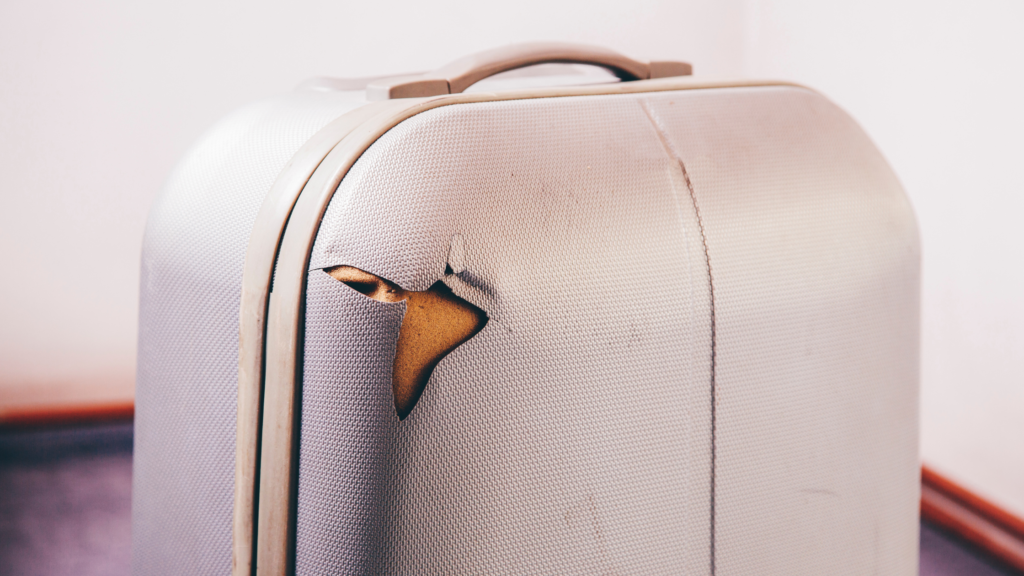
Potential Delay
There are various reasons that cause delays in luggage delivery to the baggage claim area. It could be because of loading and unloading, flight disruptions, or unpredictable weather. You might also see delays if your luggage doesn’t arrive on the same flight as you.
Additionally, if you have a connecting flight, it’s more likely that your luggage might not be transferred to your next flight on time.
No Accessibility During Flight
Unlike carry-on luggage, which you can keep with you all the time and have an eye on. You can access your carry-on luggage as well but with checked luggage, the case is different. Once you hand over your luggage at the check-in counter, you cannot access your checked luggage, even though you can see how it’s stored, until you retrieve it at the baggage claim area upon arrival.
That’s why we recommend keeping all essentials, like documents, electronics and medication, in your carry-on luggage so that you can access them whenever you require them.
When You Should Consider Carry-on Luggage
Choosing carry-on luggage entirely depends on your requirements and nature of travel. There might be many scenarios when you should choose carry-on luggage over checked luggage but we’ll be talking about the most important reasons.
- When Traveling for Short Trips or weekends
- When Traveling for Business Purposes
- To Avoid Airlines Restrictions and Fees
- To Enjoy freedom and Mobility
If you’re someone traveling for short trips, weekend getaways, or for business purposes, then you should consider using carry-on luggage instead of checked luggage.
Because carry-on luggage makes you feel lighter and is enough for a short trip. Another thing is that there are some airlines that charge fees for checked luggage, especially budget or economy airlines. In this case, you can also go with carry-on luggage and avoid paying fees for checked baggage.
And if you’re someone who loves freedom and mobility, then carry-on luggage is an excellent choice. With carry-on luggage, it’s very easy to navigate through crowded airports, tight spaces, and busy streets, ultimately saving you time from the check-in process and baggage claim when you land at your destination.
Also check out: What Size Luggage for a 1-Week Trip?
When You Should Consider Checked Luggage
There are various scenarios when you can’t avoid checking luggage; you must bring it with you. Let’s see some of the most important scenarios when you should use checked luggage.
- When Traveling for Extended Vacations or Trips
- When Traveling with Family
- When Traveling with Specialized equipment or Gear
- For a More Relaxed Experience
Here are the most common scenarios when you should consider using checked luggage: When you’re planning to travel for more than a week, you should use checked luggage so that you have enough clothing, electronics and other essentials for your long vacation.
When it comes to traveling with family, checked luggage is a must. Since there are plenty of clothes, electronics, shoes, and other items for every family member to keep, you must use checked luggage.
Another thing is that when you’re traveling with specialized equipment or gear for different activities like golfing, skiing, scuba diving, or camping, checked luggage must be the first choice because these items are generally large enough and difficult to bring in carry-on luggage.
With checked luggage, you also enjoy knowing that your checked luggage is secure in the cargo hold of your plane. So you’ll feel more comfortable and relaxed, especially during long-haul flights. You can move more freely in your cabin and stretch your legs.
Also check out: What Size Luggage for a 2-Week Trip?
Frequently Asked Questions: Carry-on vs Checked Luggage
Is it better to carry-on or check luggage?
It depends on the nature of your travel; if you’re traveling for short, durable or business purposes, it’s better to carry on luggage. But if you’re traveling with family or for extended travel, opting for checked luggage is a great choice.
So it entirely depends on your requirements; both types of suitcases are better for different purposes.
What are the rules for checked bags?
When it comes to checked luggage, airlines are more concerned about the size or dimensions of the luggage than its weight. The guidelines for checked luggage that most airlines follow are 62 linear inches.
This means that the sum of the length, width and depth of your luggage should not exceed 62 inches. If it exceeds this limit, you might be asked for oversized baggage fees.
What is the size of carry-on luggage?
The size of a carry on luggage lies between 18 to 22 inches, any luggage bigger than this dimension is considered a checked luggage. A carry on luggage must follow the guidelines of airlines which is generally 22 by 14 by 9 inches.
You luggage dimension should be equal to or less than this dimension to qualify as a carry on luggage.
Looking to explore more Luggage Brands? Check out our Huge A-Z List of EVERY Luggage Brand to find the perfect luggage set for your upcoming travels!
Heading abroad? Don’t forget to set up your eSIM to stay connected. Check out AIRLO for an easy and affordable eSIM you can set up in minutes!

